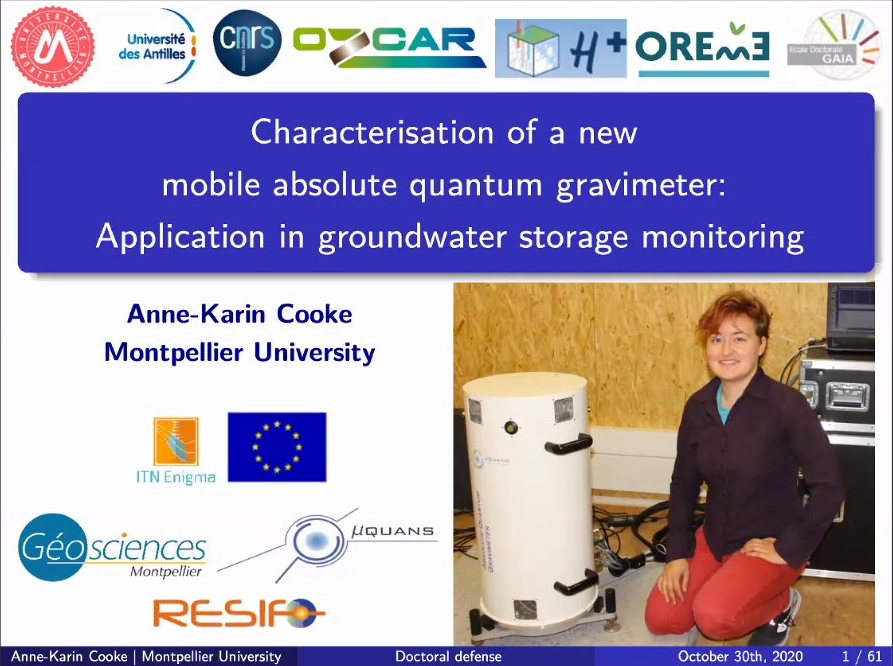ENIGMA fellow Anne-Karin Cooke successfully defended her thesis “Characterisation of a new mobile absolute quantum gravimeter: Application in groundwater storage monitoring” on Friday 30th October 2020 virtually from Montpellier University. Congrats!

Abstract
Gravimetry studies the variations of the Earth’s gravity field which can be linked to mass changes studied in various disciplines of the Earth sciences. The gravitational attraction of the Earth (referred to as g) is measured with gravimeters. Quantum gravimeters provide the possibility of continuous, high-frequency absolute gravity monitoring without instrumental drift while remaining user-friendly and transportable. We assess the performance of the absolute quantum gravimeter device AQG#B01, developed by Muquans, in view of its precision, stability, repeatability and of future terrain deployment. The measurement of g was found to not be influenced by temperature and tilt changes. Furthermore, the potential use of monitoring the vertical gravity gradient in hydrogeophysical applications was assessed experimentally and using hydrogravimetrical modelling. Time-lapse vertical gravity gradient data can deliver additional information that can be used to constrain the subsurface water distribution.
More on the defense: http://www.gm.univ-montp2.fr/spip.php?article3346&lang=fr
More on Anneka’s research project

